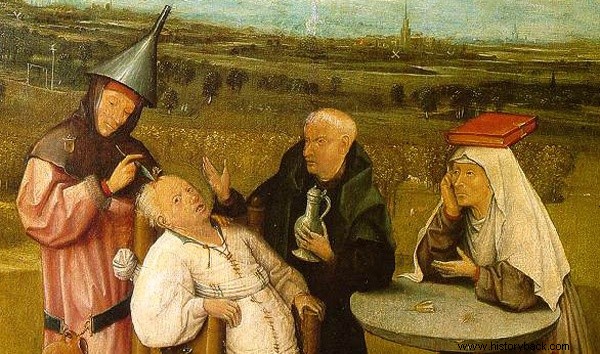
“Extraction of mental illness” by Hieronymus Bosch (1492). Prado Museum, Madrid
In past centuries, very little knowledge about mental illness , caused the pathologies related to this sphere of the organism to be treated, obviously in a clumsy way and almost always with worse results than the disease, with bizarre methods and, at times, bordering on sadism.
In general in the Middle Ages, since with superstition, in fact, they tried to fill the huge cultural gaps in the medical field, mental illness was seen as a sort of "pebble" , in a strictly material sense, to be "eradicated" from the patient's head with the help of a scalpel.
The famous painting by the Dutch artist Hieronymus Bosch , dating back to the end of the 15th century (perhaps 1492), provides us with a visual and evident proof of this belief:an improvised surgeon, actually a charlatan, is intent on removing the "foolishness", symbolized by a small flower, from the head of a naive patient, while a monk holding a jug in his hand and a nun with a book on her head attend the operation.
The doctor-charlatan wears a funnel, a symbol of stupidity and in this case an instrument of criticism towards those who think they know but are, in reality, more ignorant than the "fools" they should treat.
The work, now on display at the Prado Museum of Madrid, besides being important from a strictly pictorial point of view, it also constitutes a precious historical testimony, which allows us to better understand a certain type of mentality widespread in medieval times.
